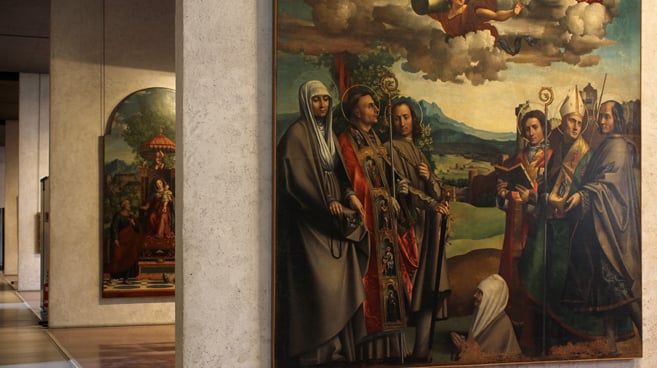
In the aftermath of the theft of 17 Old Master paintings from the Castelvecchio Museum in Verona, Italy, critics and politicians remain flabbergasted by the audacity of the heist, carried out at closing time on Thursday evening by a band of armed robbers. Some are even speculating that the crime may have been planned to benefit ISIS.
Former junior culture minister Vittorio Sgarbi, an art critic, called the theft “an absolute disaster” and “one of the most serious art robberies in our history,” while Verona Mayor Flavio Tosi described it as “a wound for the city,” according to Reuters.
Art historian and critic Tomaso Montanari was critical of the museum’s security measures, calling it “inconceivable” that there was only “a single, private armed guard, like a supermarket” in la Repubblica. He accused the government of enacting “savage” public spending cuts that led to the bare-bones defenses.
The high-profile nature of the works and the well-known difficulty of moving stolen art through legitimate channels has led to some speculation that the paintings are destined for the black market, where they will be sold to benefit ISIS. The radical terrorist group has been known to smuggle ancient antiquities looted in Africa and the Middle East.
Peter Paul Rubens, Self Portrait.
Photo: © Archivo Iconografic, S.A./Corbis.
Sgarbi speculated that Islamist militants might have planned the robbery as a “demonstrative act,” since the paintings would be instantly recognized by any serious collector who might be interested in buying them.
“It’s as if you broke into the Uffizi Galleries (in Florence) and stole a Botticelli,” added Montanari to the Daily Telegraph.
The stolen masterpieces include canvases by Peter Paul Rubens, Andrea Mantegna, Giovanni Francesco Caroto, Hans de Jode, and Jacopo and Domenico Tintoretto, and are said to be worth €15 million ($16 million).
According to a city council spokesman, most of the museum workers had already left for the day when the thieves struck, tying up the cashier and forcing the guard to hand over the keys to his car, which they used as a getaway vehicle. The robbery was over by the time the museum’s remote alarm system was activated.
Pisanello, Madonna of the Quail.
Photo: courtesy Museo di Castelvecchio, Comune di Verona.
Alberto Deregibus, deputy head of the Carabinieri police unit for safeguarding the national heritage, is less convinced that the act was that carefully planned. “It may have just been delinquents who thought: ‘Let’s steal them and decide later what to do with them,'” he told Reuters.